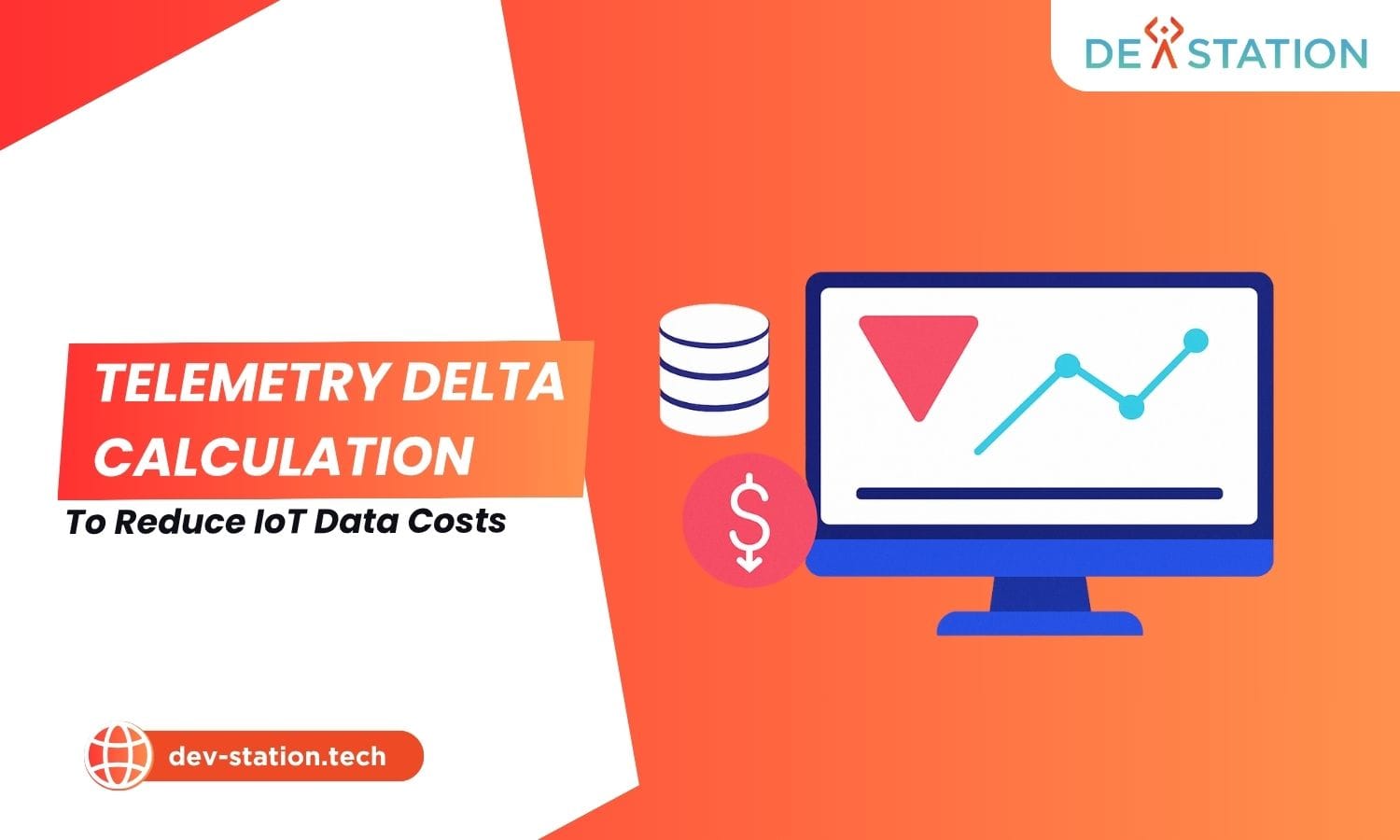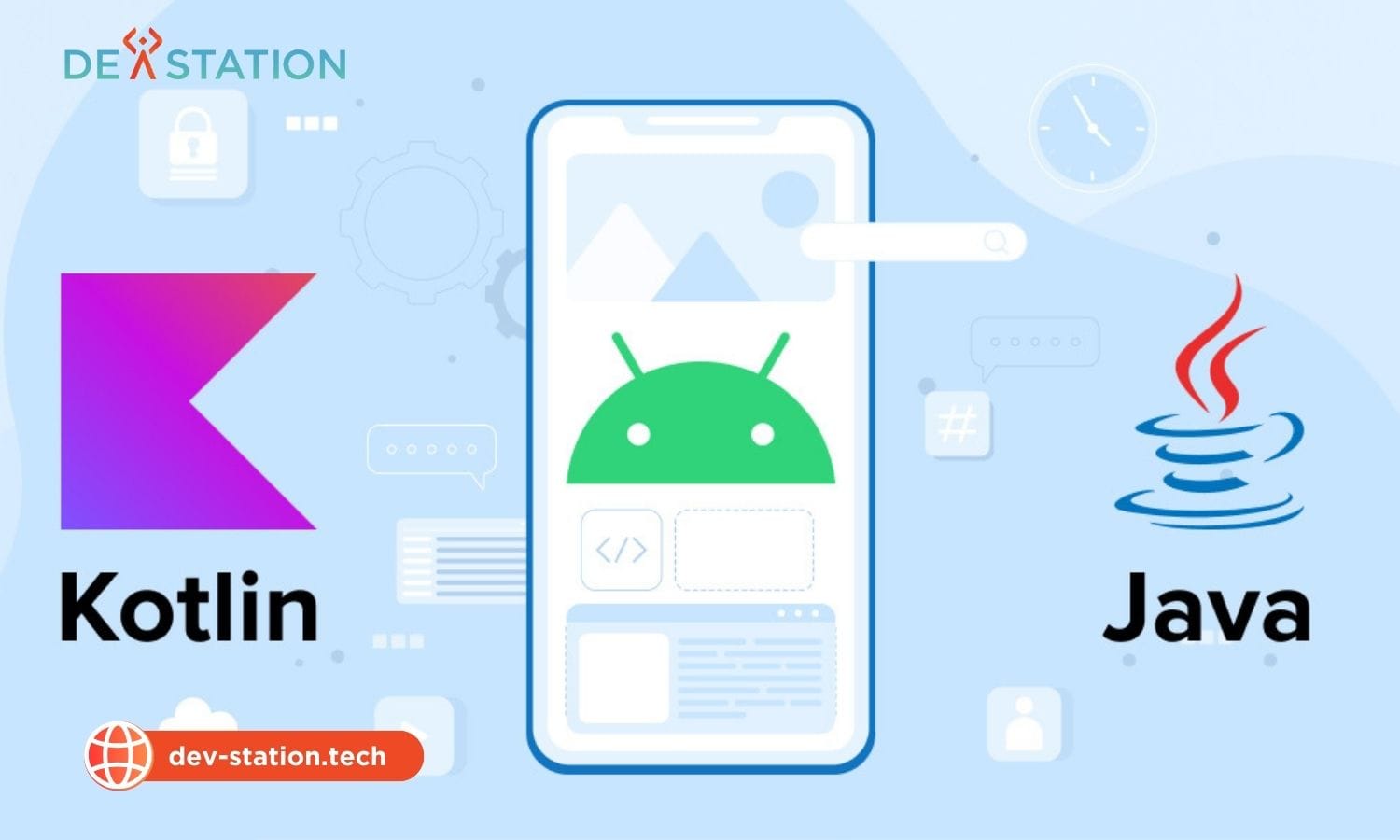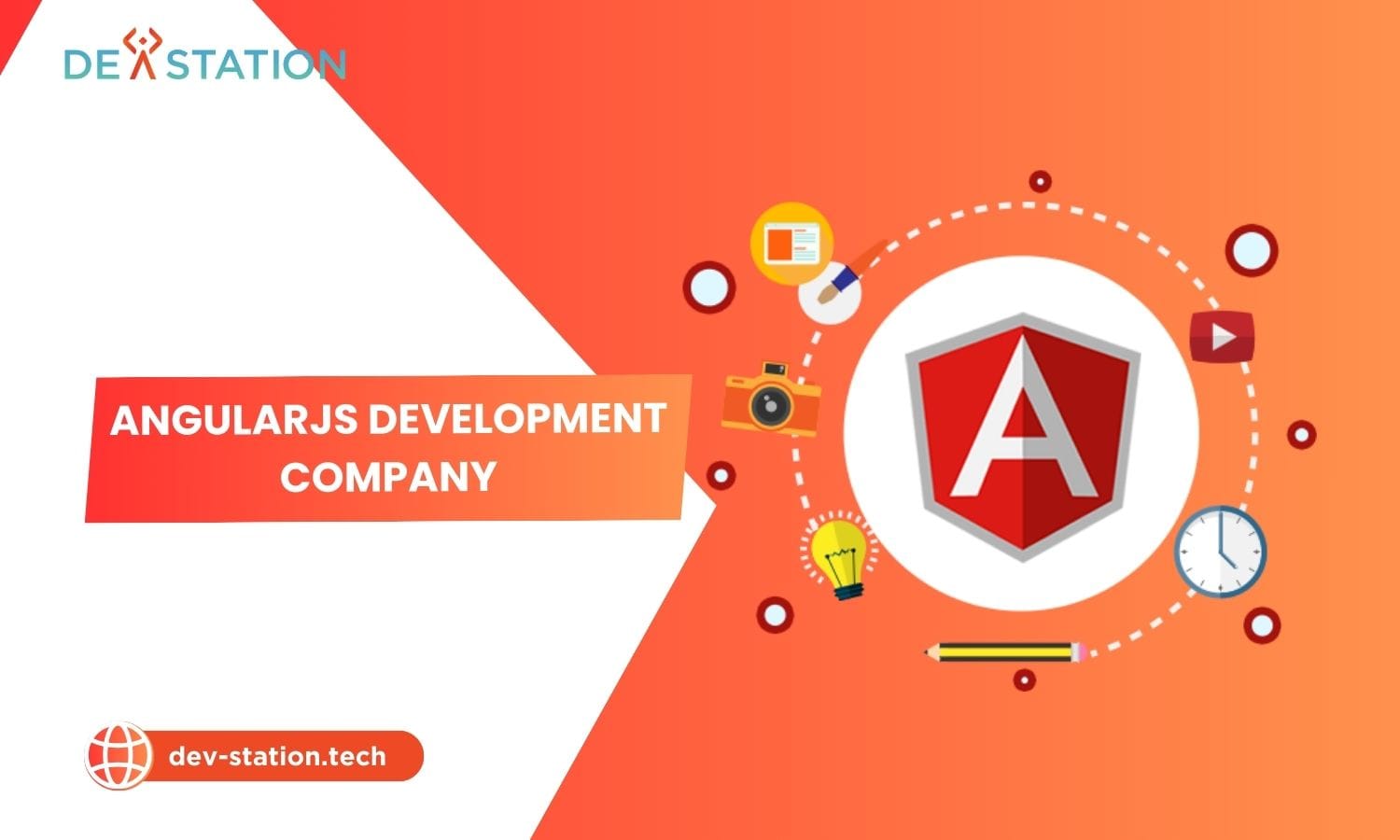Telemetry delta calculation significantly cuts IoT operational expenses by transmitting only data changes, a smart solution dev-station.tech champions for efficient device communication. This change analysis approach optimizes your entire IoT ecosystem, enhancing performance and delivering substantial financial savings through efficient data handling and improved processing speed.
Contents
ToggleHow Can You Use Telemetry Delta Calculation to Reduce IoT Data Costs?
You can reduce IoT data costs by implementing telemetry delta calculation, which involves sending only the change in value from the previous data point instead of the full value. This method drastically cuts data payload sizes, leading to lower cellular data usage, reduced cloud ingestion fees, and decreased cloud storage costs.
Implementing a difference evaluation for telemetry is a powerful strategy for any IoT project. Instead of transmitting redundant information, your devices become smarter, communicating only what is necessary. This technique, also known as delta encoding, is foundational to optimizing your entire data pipeline, from the edge device to the cloud backend. Let’s explore a detailed, step-by-step approach to harness this method for significant cost savings.
At Dev Station Technology, we guide our partners through this process to ensure maximum efficiency and return on investment.
What Is the Step-by-Step Implementation Process?
The process involves three main stages: storing the previous value on the device or in the cloud, calculating the difference (delta) between the current and previous values, and transmitting only this delta if it exceeds a predefined threshold. The receiving platform then reconstructs the original value.
Here is a detailed breakdown of the implementation logic:
- Step 1: Store the Last Sent Value. Your IoT device must retain the last telemetry value it successfully transmitted to the cloud. This can be stored in a variable in the device’s memory. For example, `last_sent_temperature = 25.5`.
- Step 2: Read the Current Sensor Value. The device reads the new value from its sensor. For example, `current_temperature = 25.6`.
- Step 3: Calculate the Delta. Find the absolute difference between the current value and the last sent value. `delta = abs(current_temperature – last_sent_temperature)`, which is `abs(25.6 – 25.5) = 0.1`.
- Step 4: Apply a Threshold (Deadband). To avoid sending data for insignificant fluctuations, define a threshold. For example, `threshold = 0.5`. The device checks if `delta >= threshold`. In our case, `0.1 < 0.5`, so the device would not send the data. If the `current_temperature` were `26.1`, the delta would be `0.6`, which is greater than the threshold, triggering a transmission.
- Step 5: Transmit the Delta or Full Value. If the threshold is met, the device sends the data. You have two options: send only the delta value `{“temp_delta”: 0.6}` or send the full new value `{“temperature”: 26.1}`. Sending the full value is often simpler for reconstruction on the backend. After a successful transmission, update the stored variable: `last_sent_temperature = 26.1`.
- Step 6: Implement a Periodic Heartbeat. To ensure the system knows the device is still online, even if values are not changing, program the device to send a full data point periodically, for example, once every hour, regardless of the delta calculation. This is a crucial aspect of effective iot remote monitoring.
How Can We Quantify the Cost Savings?
Quantifying savings involves calculating the reduction in data volume and applying it to your specific data plan and cloud service pricing. In many scenarios with slowly changing data, delta calculation can reduce data transmissions by over 90%, leading to a proportional decrease in costs.
Let’s create a detailed financial model for a hypothetical IoT deployment of 1,000 environmental sensors.
Assumptions:
- Number of Devices: 1,000
- Data Payload (JSON): `{“temperature”: 25.5, “humidity”: 45.2}`. This is approximately 40 bytes.
- Transmission Frequency (Standard): Once every minute.
- Transmission Frequency (with Delta): The value changes enough to exceed the threshold on average once every 15 minutes.
- Cellular IoT Data Cost: $1.00 per MB.
- Cloud Ingestion Cost (AWS IoT Core): $1.00 per million messages.
Scenario 1: Standard Transmission (No Delta Calculation)
- Messages per device per day: 60 minutes/hour * 24 hours/day = 1,440 messages
- Total messages per day: 1,440 messages/device * 1,000 devices = 1,440,000 messages
- Total data per day: 1,440,000 messages * 40 bytes/message = 57,600,000 bytes ≈ 57.6 MB
- Monthly Cellular Cost: 57.6 MB/day * 30 days * $1.00/MB = $1,728
- Monthly Ingestion Cost: 1.44 million messages/day * 30 days * $1.00/million = $43.20
- Total Monthly Cost: $1,771.20
Scenario 2: With Telemetry Delta Calculation
- Messages per device per day: (60 minutes / 15 minutes) * 24 hours = 96 messages
- Total messages per day: 96 messages/device * 1,000 devices = 96,000 messages
- Total data per day: 96,000 messages * 40 bytes/message = 3,840,000 bytes ≈ 3.84 MB
- Monthly Cellular Cost: 3.84 MB/day * 30 days * $1.00/MB = $115.20
- Monthly Ingestion Cost: 0.096 million messages/day * 30 days * $1.00/million = $2.88
- Total Monthly Cost: $118.08
Results:
| Metric | Standard Method | Delta Calculation | Savings |
|---|---|---|---|
| Monthly Cellular Cost | $1,728 | $115.20 | $1,612.80 (93.3%) |
| Monthly Ingestion Cost | $43.20 | $2.88 | $40.32 (93.3%) |
| Total Monthly Cost | $1,771.20 | $118.08 | $1,653.12 (93.3%) |
This calculation clearly shows that a simple change in data transmission logic can lead to over 93% cost savings in this scenario. This also has a direct impact on long-term cloud storage costs, as the volume of stored data is proportionally reduced.
What Exactly Is Telemetry Delta Calculation?
Telemetry delta calculation is a data processing technique where, instead of sending the absolute value of a sensor reading, a device calculates and sends the difference, or delta, between the current reading and the last transmitted reading. It is a form of data compression tailored for time-series data.
At its core, this change computation method transforms how IoT devices communicate. In a typical IoT setup, a device might report its temperature every minute, leading to a stream of data like `22.5, 22.5, 22.5, 22.6, 22.6`. Much of this information is redundant. With a delta-based approach, the device only reports when a meaningful change occurs. It is a foundational method for efficient data management services in IoT.
This technique is especially effective for monitoring parameters that remain stable for long periods, such as the temperature in a climate-controlled room, the fill level of a large storage tank, or the operational status of a machine. The goal is to filter out the noise and focus on the signal, ensuring that every data point sent is valuable and actionable. Efficient data transmission is key to overall bandwidth optimization, especially in cellular or satellite-based deployments.
Why Is Reducing IoT Data Transmission So Important?
Reducing IoT data transmission is crucial because it directly lowers operational costs, extends the battery life of remote devices, decreases network congestion, and improves the scalability of the entire system. It transforms an expensive, noisy system into an efficient, cost-effective one.
The benefits of optimizing data transmission extend far beyond simple cost savings. According to a report by McKinsey, the operational expenses for IoT, including connectivity and cloud services, can represent a significant portion of the total cost of ownership. Efficiently managing data is not just a technical optimization; it’s a strategic business advantage.
Here are the primary benefits:
- Lower Connectivity Costs: For devices on cellular or satellite networks, every byte counts. Reducing data usage by 90% or more translates directly into a 90% reduction in data plan costs.
- Extended Battery Life: The radio module is one of the most power-hungry components of an IoT device. Transmitting less frequently means the radio is active for shorter periods, significantly extending the battery life of off-grid devices.
- Reduced Cloud Costs: Major cloud providers often charge based on the number of messages ingested and the volume of data stored. Fewer messages mean lower ingestion and storage bills.
- Improved Scalability: A backend system that has to process 100,000 messages a day is far more scalable and less complex than one that has to handle 1.5 million. This impacts the cost and performance of your entire data processing pipeline.
How Do You Implement Delta Calculation in an IoT Platform?
You can implement delta calculation on the server side using the platform’s rule engine. This involves creating a rule that is triggered on every incoming message, retrieves the previous value from the database, calculates the delta, and only saves the new data if the change is significant.
While implementing delta logic on the device itself saves the most on connectivity costs, sometimes you may have devices with fixed firmware that cannot be changed. In these cases, you can still achieve significant savings on storage and processing by performing the delta check in the cloud. Let’s use the ThingsBoard IoT Platform as a practical example.
ThingsBoard’s powerful rule engine allows you to process incoming data in real time. Here is how you can build a rule chain to handle delta calculations for incoming time-series data.
What Is the Step-by-Step Guide for a ThingsBoard Rule Chain?
The rule chain consists of nodes that fetch the last saved telemetry, a script node to calculate the difference and compare it to a threshold, and a save node that only executes if the condition is met. This prevents every incoming data point from being written to the database.
- Input Node: The chain starts with an input node that receives all telemetry from your devices.
- Originator Telemetry Node: Add an `enrichment – originator telemetry` node. Configure it to fetch the latest value of the keys you want to check, for example, `temperature` and `humidity`. This will add the previous values to the message metadata.
- Script Filter Node: This is where the core logic resides. Add a `filter – script` node and use JavaScript to write the delta logic.
var current_temp = msg.temperature;
var prev_temp = metadata.latest_temperature;
var threshold = 0.5;
if (prev_temp === null || typeof prev_temp === ‘undefined’) {
return true; // Save the first message
}// Calculate delta and compare to threshold
var delta = Math.abs(current_temp – prev_temp);
return delta >= threshold;This script will return `true` only if it’s the first data point or if the change exceeds 0.5.
- Save Timeseries Node: Connect the `True` path from the script node to an `action – save timeseries` node. This ensures that only the messages that pass the filter (i.e., have a significant change) are saved to the database.
- Connect the Chain: Connect the nodes in sequence: Input -> Originator Telemetry -> Script Filter `(True)` -> Save Timeseries. The `False` path from the script filter leads to nothing, effectively discarding the redundant data.
This server-side approach doesn’t reduce cellular data costs, as the device still sends every message. However, it dramatically reduces database writes and storage, which are often the most significant long-term operational costs of an IoT platform.
What Are the Advanced Techniques and Considerations?
Advanced techniques include using adaptive thresholds that change based on the system’s state, applying compression algorithms to the delta values before transmission, and combining delta calculation with batching to further optimize data payloads.
While simple delta calculation is highly effective, you can achieve even greater efficiency by considering more advanced strategies. This is a key part of any sophisticated data reduction strategy.
- Adaptive Thresholds: In some systems, a fixed threshold is not optimal. For example, a temperature sensor in a chemical reactor might need a very sensitive threshold during active phases but a much larger one during stable phases. Your device logic can be programmed to adapt the threshold based on the operational state.
- Delta-of-Delta: For values that change at a relatively constant rate, you can send the delta of the delta. This second-order differencing can further compress the data but adds complexity to the reconstruction logic.
- Data Batching: Instead of sending a message every time a threshold is breached, the device can collect several changed values and send them together in a single batch. This reduces the overhead of establishing a connection and sending packet headers, further improving efficiency.
- Data Format: Transmitting data in a binary format like Protocol Buffers instead of JSON can also significantly reduce payload size, complementing the savings from delta calculation.
How Can Dev Station Technology Optimize Your IoT Data Strategy?
Dev Station Technology provides expert consulting and development services to help you implement best-in-class data optimization strategies, including telemetry delta calculation, to ensure your IoT solution is both powerful and cost-effective from the ground up.
Implementing these techniques requires a deep understanding of embedded software, network protocols, and cloud architecture. At Dev Station Technology, we specialize in building efficient, scalable, and financially viable IoT systems. We can help you analyze your specific use case, design the right data transmission strategy, and implement it either at the device level or in the cloud.
By partnering with us, you gain access to a team of experts dedicated to making your IoT project a success. Don’t let high data costs hinder your innovation. Let us show you how smart data strategies can unlock the full potential of your IoT deployment.
To learn more about how we can help you reduce your IoT data costs, explore the solutions at Dev Station Technology by visiting our website at dev-station.tech or contacting our team at sale@dev-station.tech.
Sources and Further Reading
- AWS IoT Core Pricing: https://aws.amazon.com/iot-core/pricing/
- A survey on data collection in IoT: from theory to practice: https://www.sciencedirect.com/science/article/pii/S0167739X2200230X
- IoT data management: a survey: https://journalofbigdata.springeropen.com/articles/10.1186/s40537-024-00898-3
- Optimizing IoT Data Costs: https://www.linkedin.com/advice/3/how-do-you-optimize-iot-data-costs-without-compromising-performance
- ThingsBoard Rule Engine Overview: https://thingsboard.io/docs/user-guide/rule-engine-2-0/overview/





